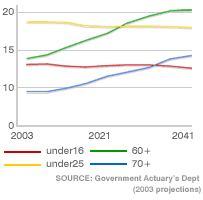UK job vacancies at record high as wages tick up

Job vacancies have hit a record high as the UK’s labour market continues to “rebound robustly”, according to the latest official figures.
The number of vacancies hit 953,000 in the three months to July, the Office for National Statistics (ONS) said.
The unemployment rate fell to 4.7% in the three months to June, while the annual growth in average pay was 7.4%.
Despite the jump in wages the ONS urged caution in reading too much into the figures.
ONS deputy statistician Jonathan Athow told the BBC that, while the rate of increase had not been as high for a long time, the real issue was what happened last year.
“This time last year we had millions of people on furlough many getting 80% of their wages, other people having their hours cut, and that pushed wages down.
“So when we look at wages this year, when people have come back from furlough, it’s really been boosted by the fact that last year wages were quite low. Some of this group was just wages returning to the level before the pandemic.”
The ONS said payrolls rose by 182,000 between June and July, although at 28.9 million it is still 201,000 lower than before the pandemic struck.
The number of people on payroll has now grown over half a million in the past three months, regaining about four-fifths of the fall seen at the start of the pandemic.
Overall, Mr Athow said the “world of work continues to rebound robustly” from the pandemic.
He said that early survey figures show that the number of job vacancies passed one million for the first time ever in July.
Arts, leisure and food service firms were among those making a big contribution to the surge in job openings.
“There was no sign of redundancies starting to pick up in our survey data ahead of the furlough scheme beginning to wind down, and Insolvency Service figures for July suggest the same,” Mr Athow added.
Chancellor Rishi Sunak said the figures showed the government’s plan for jobs was working.
He said: “I know there could still be bumps in the road but the data is promising – there are now more employees on payrolls than at any point since March 2020 and the number of people on furlough is the lowest since the scheme launched.”

These figures show a jobs market in robust recovery as the economy reopens and the furlough scheme starts to be phased out. Employment is up on all measures, unemployment down and experimental numbers in the month of July showed there are over one million vacancies.
There are record numbers of unfilled jobs, in sectors such as entertainment, accommodation and food, underlining the concerns of industry on labour shortages.
The number of payroll jobs reported on the HMRC systems is now very close to its pre pandemic level at 28.9 million now compared with 29 million in March 2020. That number is up 576,000 over the past year and 182,000 up in July alone.
The growth in that varies considerably between regions, with holiday areas such as Cornwall and west Wales showing annual rates of growth of around 5%, far above the rates in major cities.
The chancellor welcomed the figures as “promising”. Analysts warned that the unemployment figures would rise as the furlough scheme continued to be phased out. But the peak unemployment rate is on course to be significantly lower than had been expected last year.

Yael Selfin, chief economist at KPMG UK, said: “The labour market outperformed expectations as the economy accelerated with the relaxation of Covid-related restrictions.
“Changes to the business environment, such as the fall in business travel and the rise in online commerce, increased the need for skills, from IT specialists to hauliers, while at the same time caused an unusually high level of mismatch in the UK’s labour market.”
Ruth Gregory, senior UK economist at Capital Economics, said the jobs data should calm fears that the ending of government support measures could send unemployment higher.
“The figures add weight to our view that there won’t be a big shake-out in employment once the furlough scheme expires at the end of September.
“It was encouraging that PAYE employment in July rose by 182,000 month-on-month and the claimant count fell by 7,800 month-on-month leaving the claimant count rate unchanged at 5.7%,” she said.
Source: https://www.bbc.co.uk/news/business-58241006
